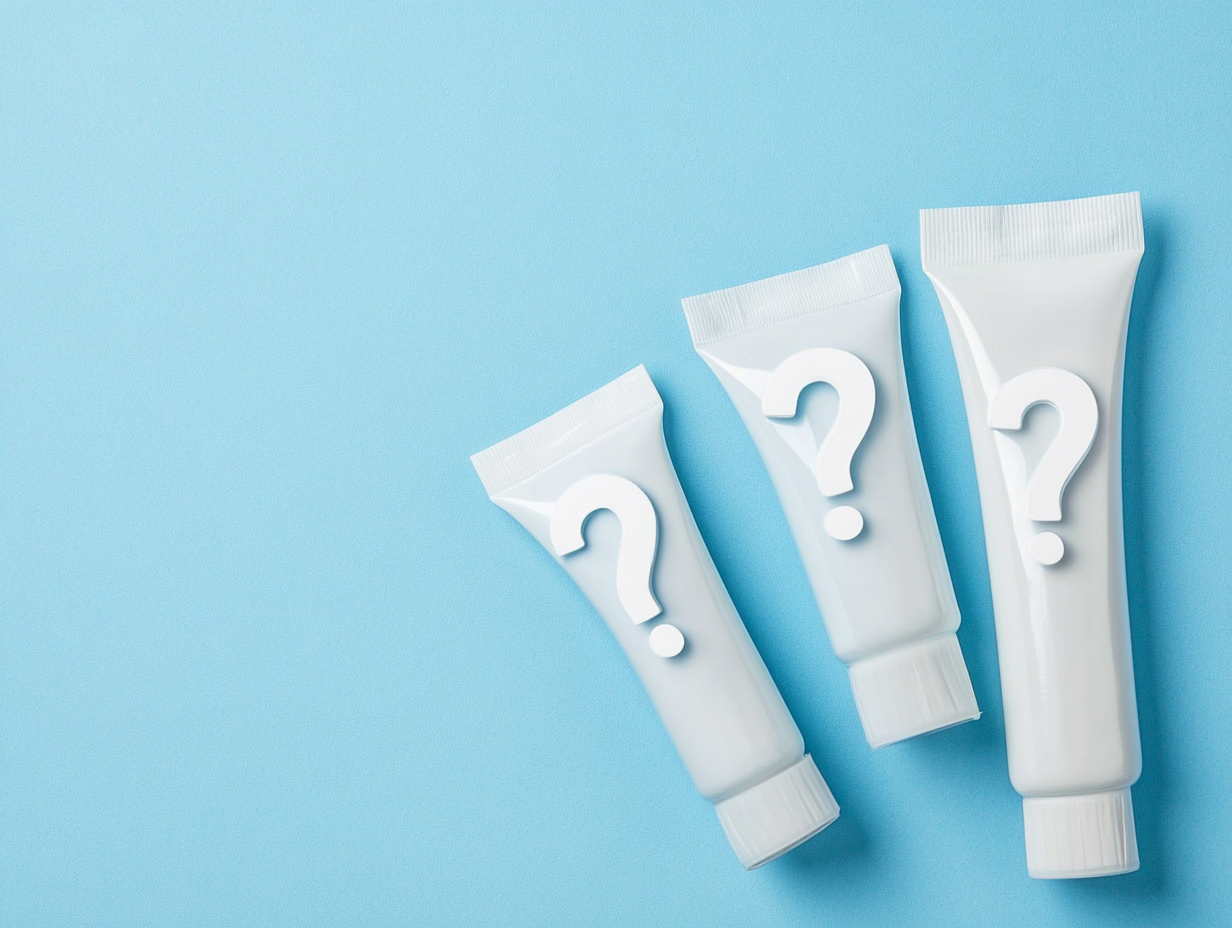What's in your toothpaste?
Have you ever wondered about the fluoride story? What this chemical is, where it comes from, and what health effects it actually has (both beneficial and disastrous)?
These are important questions.
We are going to look at fluoride in depth, so you can make informed decisions for yourself and your family. Our first story (Part 1) was about ingested fluoride (added to drinking water) this second story is about topical fluoride (added to toothpaste and used in dental treatments).
The first thing to note is that these are two different types of fluoride. What’s added to your toothpaste and used in dental treatments is a medical grade version of fluoride which is different than the chemical by-product of industrial waste used in water fluoridation.
History of fluoride in dental caries prevention
Fluoride was not widely used for any dental purposes prior to the mid-1940’s although it was studied for dental effects caused by its natural presence in community water supplies. These early studies showed a correlation of high levels of naturally occurring fluoride with the disease fluorosis. The grotesque, brown-stained teeth resulting from fluorosis were strangely tough and resistant to decay, which led to the novel idea of putting a fluoride into drinking water. But that’s a different story. (read more here).
Unlike water fluoridation, which is ingested, toothpastes (and mouth rinses) with fluoride are a topical application. Research suggests that the main dental benefits come from fluoride that is applied topically, not systemically ingested. In essence, when applied directly, the teeth would be protected against dental decay.
By the 1960’s research indicated that fluoride could be successfully incorporated into toothpastes and clinical trials demonstrated its supposed effectiveness. By the end of the 1970’s almost all toothpastes contained fluoride, and prevailing wisdom said this was the main reason for improved oral health in many countries.1 In fact, one can easily find studies that show topical fluoride is effective in reducing dental caries.
What are the dangers of fluoride?
It is wise however to also consider the bigger picture here. Topical fluoride can be inadvertently ingested, and there is no set standard for daily recommended fluoride dosage. What other health consequences might daily use of topical fluoride have? Are the health risks and safety levels sufficiently researched?
Have you noticed the poison warnings on toothpastes? They read similar to this: “If you accidentally swallow more than used for brushing, seek professional help or contact a poison control center immediately.” Next time you’re in your bathroom, take a look. This is what you are putting in your mouth — toothpastes are in fact a major source of fluoride exposure, especially for children. Research has shown that many children now exceed recommended daily fluoride intake due to toothpastes alone.2
The dangers of ingested fluoride are numerous and potentially severe, and include hormone disruption and neurotoxic effects.3
Armed with all this information, it begs the question…do the possible benefits outweigh the risks?
Cautions to take if you decide to use a fluoridated toothpaste
Don’t swallow ANY toothpaste and carefully monitor your child’s brushing to ensure they do not swallow it. Bear in mind also, that gums and oral mucosa are absorbing whatever you are putting in your mouth — so you are ‘ingesting’ some fluoride even if you spit out the toothpaste.
Take heed to the warning on the tube…even a tiny amount can have serious effects. Because topical fluoride is considered a medication there are guidelines listed for its use at Drugs.com:
· Do not use in children unless recommended by a dentist or physician
· Do not allow a child to use without adult supervision to prevent overdose
· Talk to your doctor or dentist before use if you are pregnant or breastfeeding
· Tell your doctor if you are on a low salt or a salt-free diet
· If you have gum disease, some forms of topical fluoride may be irritating to your gums. Talk to your dentist or doctor if you experience bothersome oral symptoms with use
Can you help mitigate dental caries without fluoride?
There are many ways to prevent cavities without fluoride. Let’s start with looking at how cavities are formed — knowing what causes tooth decay may help us prevent it without using a dangerous chemical.
“Tooth decay is a disease caused by specific bacteria called Streptococcus mutans. Many bacteria do not process their food into carbon dioxide and water, but, rather, they “ferment” their foods into other kinds of waste products, such as alcohols or acids. Streptococcus mutans lives in microscopic colonies on the surface of the teeth, and it has the distinction of being able to produce concentrated acid waste that can dissolve the tooth enamel on which it resides. In other words, these germs can create holes in teeth, and all they require to do so is a fuel such as sugar, processed foods, and/or other carbohydrates.”4
Based on this, some solutions may be as simple as:
• Consuming less sugar, less sugar-containing foods, less highly processed foods/drinks. Sugary drinks contribute to a more acidic saliva, which weakens enamel and promotes cariogenic effects.5
• Improving oral hygiene. In essence, the leading cause of tooth decay is NOT caring for your oral health (tongue scraping to remove harmful bacteria, flossing and brushing to dislodge the plaque and bacteria from teeth)
• Second on the list of leading causes of tooth decay (behind carbs and sodas) is smoking and alcohol. Both are considered oral desiccants, or agents that extract moisture from hydrated tissues. A frequently dry mouth means reduced saliva flow and less oxygen–an environment in which oral bacteria are at their most active.
• Establishing a nutritious diet that strengthens the teeth and bones
Remember, fluoride is neither a nutrient nor essential for healthy teeth. However, evidence has proven that a lack of essential nutrients and sugary food and drinks make teeth more susceptible to decay. So, the best cavity prevention strategy is not the consumption or application of fluoride, it is a healthy diet and a consistent and thorough oral care routine!
The fluoride takeaway
Fluorosis, hormonal disruption, and neurotoxic effects are substantial concerns. We need to know about these dangers because, as the saying goes, “Knowledge is power.” Armed with the right information, you can make choices that work best for you and your family.
A healthy life and healthy teeth are about balance. A holistic approach that implements sensible choices — like choosing to filter drinking water and opting for fluoride-free toothpaste— can make a significant difference to you and your family’s wellbeing. Because you deserve it!
References
1 https://pubmed.ncbi.nlm.nih.gov/24308396/ ↩︎
2 http://fluoridealert.org/issues/sources/f-toothpaste/ ↩︎
3 https://iaomt.org/iaomt-fluoride-position-paper-2/?cn-reloaded=1 ↩︎
4 https://iaomt.org/iaomt-fluoride-position-paper-2/?cn-reloaded=1 ↩︎
5 https://www.hindawi.com/journals/scientifica/2016/5027283/ ↩︎





